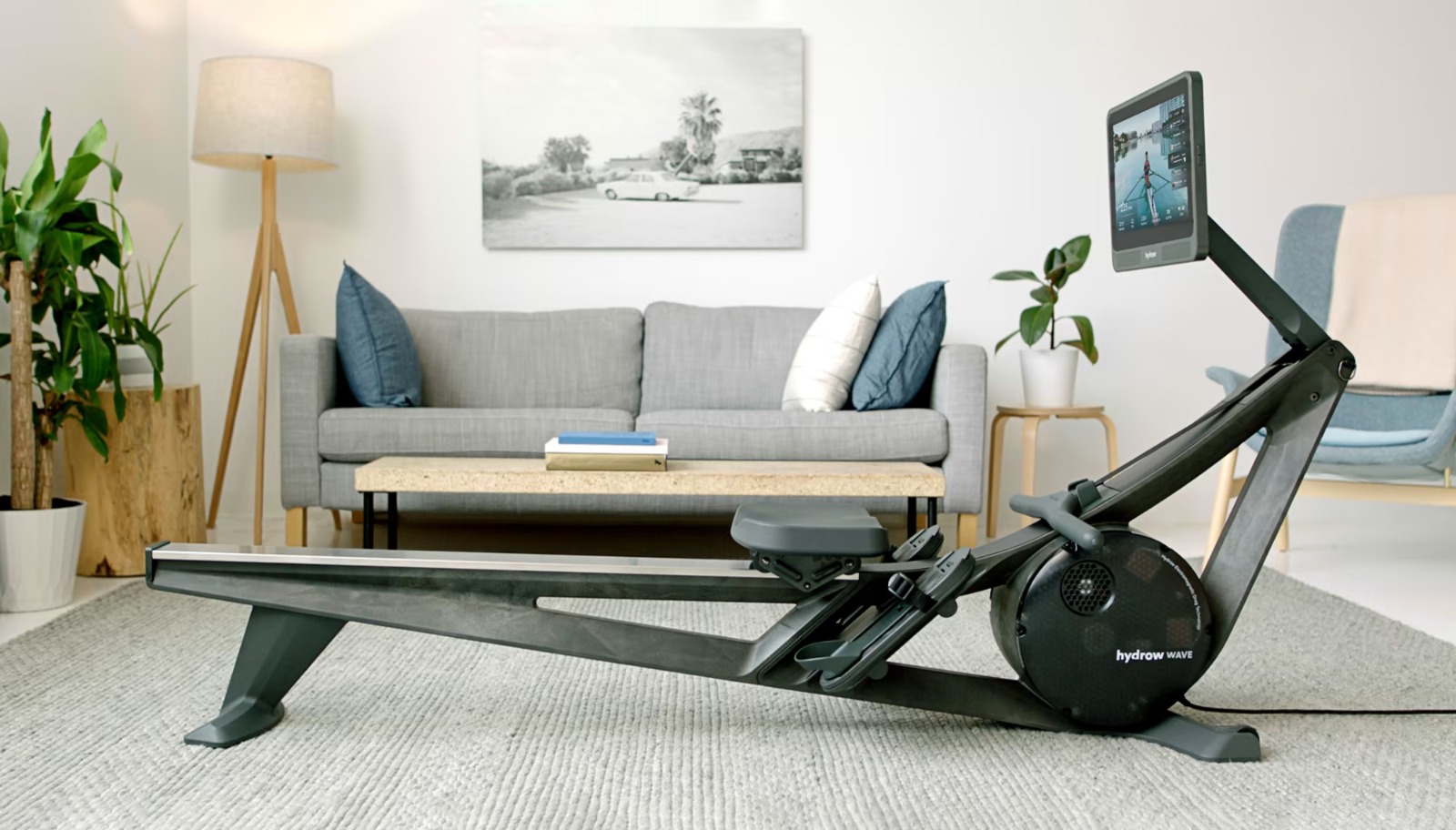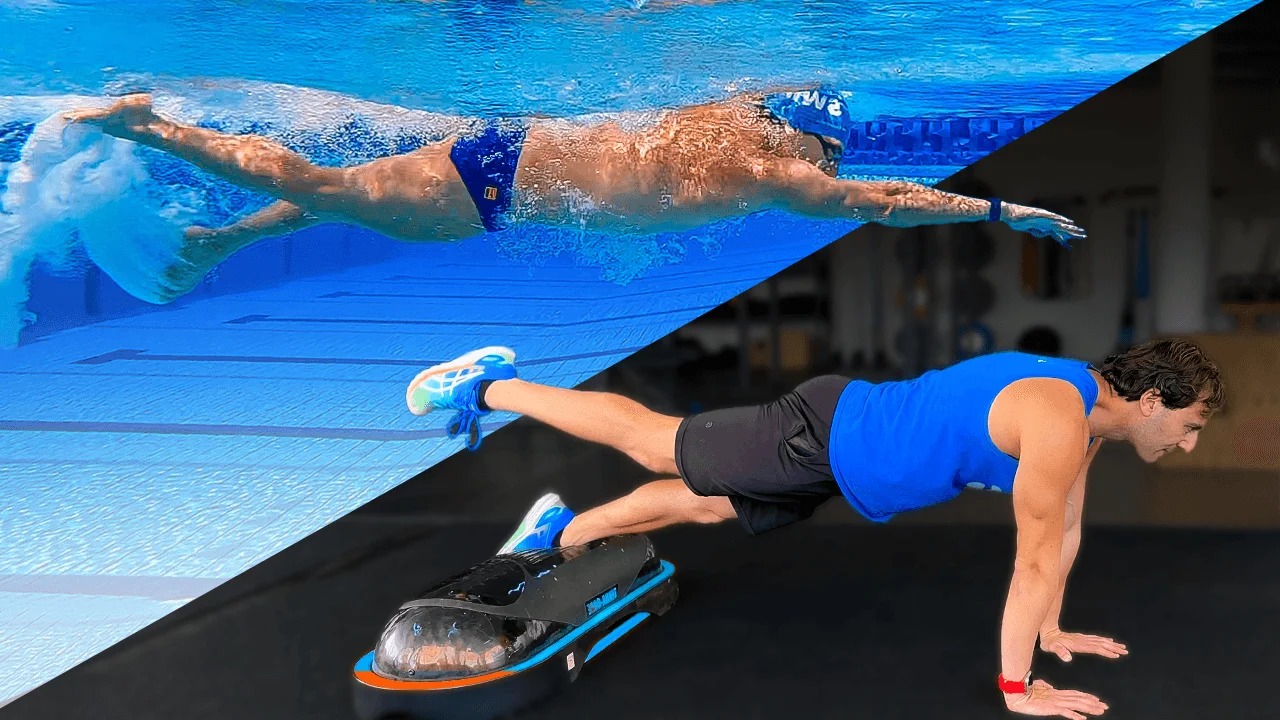
Wearables Beyond Steps* – How smartwatches now track stress, sleep, and recovery.
“From simple step counters to advanced health companions, modern wearables now track stress, sleep, and recovery, offering real-time insights into our physical and mental well-being. By analyzing heart rate variability, sleep stages, oxygen levels, and recovery metrics, smartwatches empower users to manage stress, optimize rest, prevent burnout, and make informed lifestyle decisions for long-term health and performance.”
💪 Fitness Guru
50 min read · 17, Sep 2025

Wearables Beyond Steps – How Smartwatches Now Track Stress, Sleep, and Recovery
For years, fitness wearables and smartwatches were marketed primarily as step counters. They encouraged users to hit the now-famous “10,000 steps” goal, gamifying movement and motivating people to stay active. But technology doesn’t stand still. Today’s wearables have evolved far beyond simple pedometers, becoming sophisticated health companions capable of monitoring stress, analyzing sleep patterns, and measuring recovery. These functions, once the domain of specialized clinics, are now available on our wrists in real time.
In this article, we’ll explore how wearables have transformed from step trackers into powerful health tools, the science behind their features, their practical applications, and what the future holds for personal health monitoring.
The Evolution of Wearables: From Pedometers to Health Hubs
The earliest wearables—basic pedometers—offered nothing more than a rough count of daily steps. When Fitbit launched its first fitness tracker in 2009, it ushered in a new era by syncing step data with smartphones, sparking the quantified self-movement. Over the years, companies like Apple, Garmin, Samsung, and WHOOP expanded beyond step tracking, integrating optical heart-rate sensors, accelerometers, and advanced algorithms.
Today, wearables not only count steps but also monitor heart rate variability (HRV), detect blood oxygen levels (SpO2), analyze breathing patterns, and even provide early warnings for potential health issues. This shift reflects both consumer demand for holistic wellness and advancements in sensor technology.
Stress Tracking: The New Frontier in Wearables
Stress is often described as the silent killer. Chronic stress can lead to high blood pressure, cardiovascular disease, obesity, and mental health challenges. Traditionally, stress levels were measured through psychological surveys or cortisol tests, but wearables now provide a non-invasive alternative.
How Wearables Track Stress
- Heart Rate Variability (HRV): The variation in time between heartbeats is a strong indicator of stress. Lower HRV suggests higher stress levels, while higher HRV indicates relaxation and resilience.
- Electrodermal Activity (EDA): Some devices, like Fitbit Sense, use EDA sensors to detect tiny changes in skin conductance caused by sweat gland activity, which increases during stress.
- Respiratory Rate: Elevated or irregular breathing often correlates with stress, and wearables measure this through motion sensors and optical sensors.
Benefits of Stress Tracking
- Awareness: Real-time notifications alert users when their body is under strain, encouraging breaks or breathing exercises.
- Preventative Care: Identifying chronic stress patterns allows for lifestyle adjustments before medical complications arise.
- Integration with Mindfulness Apps: Many wearables guide users through meditation or relaxation techniques in response to stress alerts.
Sleep Tracking: From Hours to Insights
Sleep is one of the most critical factors for health, but most people underestimate both its importance and their actual sleep quality. Modern wearables bring clarity, moving beyond simply recording time spent in bed.
How Sleep Tracking Works
- Accelerometers: Detect movement to differentiate between wakefulness and sleep.
- Heart Rate & HRV: Variations provide insight into sleep stages.
- Blood Oxygen Sensors: Measure oxygen saturation to flag potential sleep apnea events.
Sleep Stages and Insights
Most wearables now categorize sleep into:
- Light Sleep – The entry stage where the body starts relaxing.
- Deep Sleep – Essential for physical recovery and immune function.
- REM Sleep – Vital for memory, learning, and emotional regulation.
Devices like the Oura Ring and WHOOP Band provide readiness scores based on sleep quality, helping users determine if they should push themselves physically or prioritize recovery.
Recovery Metrics: Optimizing Performance and Health
For athletes and health-conscious individuals, recovery is just as important as training. Overtraining can lead to fatigue, injury, and decreased performance. Wearables now offer recovery tracking to ensure balance between exertion and rest.
Key Recovery Metrics
- Resting Heart Rate (RHR): A low and stable RHR indicates good recovery, while elevated rates suggest stress or fatigue.
- Heart Rate Variability (HRV): Higher HRV reflects better recovery and resilience.
- Sleep Quality: Integrated into recovery scores to guide training intensity.
- Respiratory Rate & Temperature: Some devices detect subtle changes in baseline temperature and breathing, flagging potential illness before symptoms appear.
Practical Applications
- Athletes: Use recovery scores to plan training sessions and avoid burnout.
- General Users: Balance work, fitness, and rest to maintain long-term health.
- Workplace Wellness: Organizations encourage employees to track recovery to reduce stress-related absenteeism.
Real-World Applications of Advanced Wearables
- Mental Health Support – Devices flagging stress can encourage users to engage in mindfulness, preventing escalation into anxiety or burnout.
- Chronic Condition Management – People with sleep apnea, hypertension, or arrhythmias benefit from continuous monitoring.
- Sports and Fitness – Coaches and athletes use wearable insights to customize training programs.
- Corporate Wellness Programs – Companies integrate wearables into employee health initiatives, promoting productivity and resilience.
- Early Illness Detection – Subtle shifts in HRV, temperature, or sleep may indicate infections, sometimes even before symptoms surface.
The Science vs. Limitations
While wearables provide unprecedented access to health data, they are not perfect.
- Accuracy Concerns: Wrist-based heart rate sensors can be less accurate during high-intensity exercise compared to chest straps. Sleep stage detection, while improving, is not yet equivalent to a clinical polysomnography test.
- Over-Reliance: Some users may experience “data anxiety,” stressing over every fluctuation.
- Privacy Issues: Health data stored by wearable companies raises concerns about security and usage by third parties.
Despite these challenges, continuous improvements in AI, sensor technology, and medical validation are closing the accuracy gap.
The Future of Wearables: Beyond the Wrist
Looking ahead, wearables are likely to become even more integrated into our daily lives. Possible advancements include:
- Non-Invasive Glucose Monitoring: Helping diabetics track blood sugar without finger pricks.
- Blood Pressure Monitoring: Continuous cuffless measurement.
- Wearable Patches and Clothing: Sensors embedded in fabrics for 24/7 monitoring.
- Predictive Health AI: Algorithms that detect disease risks weeks or months before symptoms appear.
- Integration with Telemedicine: Wearable data feeding directly to doctors for proactive care.
As wearables evolve, they will transform from fitness gadgets into essential health management tools.
In the beginning, wearable devices were simple pedometers, counting steps and motivating people to move a little more each day, but technology has transformed them into sophisticated health companions capable of monitoring not only activity but also stress, sleep, and recovery, creating an entirely new relationship between humans and their personal health data. The earliest wearables, such as Fitbit in 2009, sparked the quantified self-movement by syncing step counts to apps, yet now modern devices like Apple Watch, Garmin, Samsung Galaxy Watch, WHOOP Band, and Oura Ring measure heart rate variability, blood oxygen saturation, breathing patterns, and even skin conductivity to reveal stress levels or sleep quality. Stress, often called the “silent killer,” is one of the most important areas where wearables are making a difference because chronic stress increases risks of hypertension, cardiovascular disease, obesity, and mental health struggles, and instead of waiting for medical tests or self-report surveys, wearables use sensors to track stress in real time through changes in HRV (variation between heartbeats), electrodermal activity (tiny electrical changes in the skin linked to sweating), and respiratory rate (since breathing becomes irregular when stressed). These insights are paired with on-device interventions like guided breathing, mindfulness reminders, or personalized alerts, which make stress management proactive rather than reactive. Just as stress monitoring evolved, sleep tracking has also moved far beyond recording time spent in bed, since modern wearables break down the night into stages—light, deep, and REM—using accelerometers to track movement, optical sensors to measure heart rate and HRV, and SpO2 sensors to check for oxygen drops linked to sleep apnea. By delivering daily sleep scores, readiness ratings, and even tailored advice on bedtime routines, wearables transform vague awareness of “good” or “bad” sleep into actionable data for better physical and mental health. In fact, devices like WHOOP and Oura Ring are now trusted by athletes and health-conscious individuals to fine-tune performance because recovery tracking has become as important as the workouts themselves, with metrics such as resting heart rate, HRV, respiratory rate, and body temperature helping determine whether the body is ready for exertion or needs rest. For example, a runner whose HRV drops suddenly and resting heart rate spikes may be advised by their wearable to reduce intensity or skip training altogether to prevent injury, while an executive experiencing poor sleep quality may see reminders to adjust evening habits to improve resilience. Recovery scores help balance stress from exercise, work, and life, turning wearables into coaches that optimize long-term performance. Beyond athletes, general users also benefit because tracking recovery ensures that people juggling work, family, and fitness avoid burnout, while corporations are adopting wearables in wellness programs to reduce absenteeism and improve employee health. These advancements are not without challenges, since wearable data is not always perfectly accurate—wrist-based heart rate readings may struggle during high-intensity workouts compared to chest straps, sleep stage detection is still an estimate compared to polysomnography in a sleep lab, and over-reliance on data can cause “data anxiety” where users obsess over every metric. Privacy concerns also remain since wearable companies collect sensitive health information, raising questions about data sharing with insurers or advertisers. Yet, despite these drawbacks, continuous improvements in sensor design, AI-driven algorithms, and medical partnerships are steadily closing the accuracy gap, making wearables more reliable each year. Real-world stories further illustrate their impact: individuals with undiagnosed sleep apnea discovered irregular oxygen drops through smartwatches, athletes prevented injuries by respecting recovery scores, and stressed professionals learned to adopt mindfulness practices after receiving frequent stress alerts during workdays. The integration of wearables with telemedicine is another breakthrough, allowing doctors to access months of HRV, sleep, and stress data for proactive treatment instead of episodic snapshots during clinic visits. Looking ahead, the future of wearables is even more exciting, with research pushing toward non-invasive glucose monitoring for diabetics, cuffless continuous blood pressure tracking, wearable patches and smart clothing with embedded sensors, and AI-driven predictive health that could detect illnesses days or weeks before symptoms appear. Imagine a smartwatch that warns of viral infection risk before fever develops, or a shirt that monitors heart rhythm continuously without requiring electrodes—these scenarios are rapidly approaching reality. As technology advances, wearables will move from being lifestyle gadgets to essential healthcare tools, democratizing health monitoring by placing once-expensive medical tests into the hands of everyday users. In summary, wearables have evolved from counting steps to tracking stress, sleep, and recovery, giving people unprecedented control over their well-being by translating invisible physiological signals into clear, actionable insights. Stress tracking empowers users to reduce mental and physical strain, sleep tracking highlights the quality of rest rather than just quantity, and recovery tracking ensures the right balance between effort and rest. While accuracy, privacy, and over-dependence remain considerations, the benefits are undeniable: better awareness, early intervention, and proactive health management. The trajectory points toward a future where wearables integrate seamlessly into daily life, acting not just as fitness trackers but as personal health guardians. For athletes, professionals, and everyday people alike, the smartwatch or smart ring on the wrist is no longer just a step counter—it is a window into the body’s hidden rhythms and a guide to healthier living.
Wearables have evolved far beyond their humble beginnings as step counters, transforming from simple pedometers into sophisticated health-monitoring devices capable of tracking stress, sleep, and recovery in ways that were once the exclusive domain of clinical laboratories and specialized medical equipment, creating a new era in personal health management where individuals can monitor vital aspects of their physical and mental well-being in real time; initially, wearable technology like early Fitbit trackers and pedometers was primarily focused on encouraging movement through step counting, gamifying daily activity, and promoting general fitness, but advances in sensor technology, artificial intelligence, and miniaturization have allowed devices such as the Apple Watch, Garmin, WHOOP Band, Oura Ring, and Samsung Galaxy Watch to provide an array of physiological insights that extend far beyond simple step metrics, offering users the ability to monitor heart rate variability (HRV), blood oxygen levels (SpO2), skin temperature, respiratory rate, and even electrodermal activity (EDA), enabling the detection and analysis of stress patterns, sleep quality, and recovery needs, which has become particularly important in modern lifestyles marked by high stress, sedentary behavior, and irregular sleep schedules; stress tracking is now a core feature of most advanced wearables because chronic stress is known to contribute to serious health issues including hypertension, cardiovascular disease, metabolic syndrome, immune dysfunction, anxiety, and depression, and devices accomplish this by continuously measuring physiological indicators such as HRV, which reflects the time variation between consecutive heartbeats and serves as a reliable proxy for autonomic nervous system activity, EDA sensors that detect micro-changes in skin conductance resulting from sweat gland activity linked to emotional arousal, and respiration patterns that can reveal heightened stress or anxiety levels, allowing wearables to generate personalized notifications or guided interventions, such as mindfulness exercises, breathing techniques, or relaxation prompts, helping users reduce stress before it manifests as serious health consequences; sleep tracking has also undergone a dramatic transformation, moving from rudimentary metrics like total sleep duration to sophisticated analyses that identify sleep stages—light, deep, and REM sleep—through a combination of accelerometer data, heart rate measurements, HRV analysis, and oxygen saturation monitoring, providing insights into not only the quantity but also the quality of sleep, highlighting disturbances, irregular patterns, or potential conditions like sleep apnea, and offering actionable guidance such as optimal bedtimes, sleep environment recommendations, and personalized sleep scores, which are particularly valuable for athletes, professionals, and anyone seeking to optimize cognitive function, mood regulation, and overall health; recovery tracking is another area where modern wearables have made a significant impact, as understanding the body’s readiness for activity is essential to prevent overtraining, fatigue, injury, and decreased immune function; devices monitor recovery through metrics such as resting heart rate, HRV, sleep quality, respiratory rate, and even subtle variations in skin temperature, and by analyzing these data points, wearables can generate recovery scores that guide users on whether to engage in high-intensity workouts, moderate activity, or focus on rest and regeneration, providing athletes, fitness enthusiasts, and busy professionals with actionable intelligence that supports sustainable performance and long-term well-being; real-world applications of these technologies demonstrate their utility and transformative potential, as wearables can help detect early signs of stress-related conditions, encourage adoption of healthier routines, assist in managing chronic illnesses, and even provide early warning signs of infections or cardiovascular events through deviations in baseline physiological metrics, while corporate wellness programs are increasingly leveraging wearable data to improve employee health outcomes, reduce absenteeism, and promote mental well-being, creating a culture of proactive health management in professional environments; however, despite their many benefits, wearables are not without limitations, as wrist-based heart rate sensors may have reduced accuracy during intense physical activity compared to chest straps, sleep stage detection algorithms are approximations and cannot fully replace polysomnography, continuous monitoring can sometimes generate data anxiety in users who overanalyze minor fluctuations, and the storage and use of sensitive health information raise privacy and cybersecurity concerns, highlighting the need for careful interpretation of data, awareness of device limitations, and adherence to privacy best practices; the science behind these devices continues to advance rapidly, driven by improvements in sensor technology, machine learning algorithms, and integration with clinical research, leading to increasing reliability and expanding capabilities such as non-invasive glucose monitoring, continuous cuffless blood pressure measurement, smart clothing with embedded sensors, and AI-driven predictive health analytics that could detect potential illness weeks before symptoms appear, representing a paradigm shift in personal healthcare where proactive monitoring and early intervention become standard practice; as wearables become more integrated into everyday life, they are poised to change how people approach health, fitness, and wellness, moving the conversation from reactive treatment to continuous, informed self-care, with users able to adjust behavior based on real-time feedback about stress, sleep quality, and recovery status, leading to improved physical health, mental resilience, and overall quality of life; whether for athletes seeking optimal performance, busy professionals managing stress, or everyday individuals striving to improve sleep and wellness, wearables now serve as powerful personal health companions, offering insights once accessible only through clinical testing and professional supervision, and by making the invisible signals of the body visible, they empower users to make informed decisions, improve lifestyle habits, prevent illness, and cultivate a more balanced, health-conscious life; in conclusion, the evolution of wearables from step counters to comprehensive health trackers demonstrates the convergence of technology, biology, and lifestyle, providing unprecedented access to personal health metrics and actionable insights, and while accuracy, privacy, and proper interpretation remain considerations, the benefits of understanding and managing stress, sleep, and recovery are profound, positioning wearable technology as an indispensable tool for achieving holistic well-being, enhancing performance, and fostering a proactive approach to health in an increasingly complex and fast-paced world.
Conclusion
Wearables have moved far beyond step counting, emerging as powerful health and wellness devices. By monitoring stress, sleep, and recovery, they empower individuals to take control of their physical and mental well-being in real time. Stress tracking offers early interventions, sleep tracking reveals deeper insights into rest, and recovery metrics guide training and lifestyle choices.
While accuracy and privacy remain concerns, the trajectory is clear: wearables are becoming indispensable partners in health. Whether you’re an athlete optimizing performance, a professional managing workplace stress, or simply someone aiming for better sleep, modern wearables provide personalized insights that were unimaginable a decade ago.
The future will bring even more sophisticated features—like glucose and blood pressure monitoring—making wearable technology a cornerstone of proactive healthcare.
Q&A Section
Q1: What makes modern wearables different from early fitness trackers?
Ans: Early trackers focused on counting steps, while modern wearables measure heart rate variability, stress levels, sleep quality, recovery, and even blood oxygen, offering holistic health insights.
Q2: How do smartwatches track stress?
Ans: They primarily use heart rate variability (HRV), electrodermal activity (EDA), and respiratory rate to detect physical signs of stress and provide real-time feedback.
Q3: Can wearables accurately track sleep stages?
Ans: While not as precise as medical sleep studies, wearables use movement, heart rate, and oxygen data to give reliable estimates of light, deep, and REM sleep.
Q4: Why is recovery tracking important?
Ans: Recovery metrics like HRV and sleep quality help balance exertion with rest, preventing burnout, reducing injury risk, and optimizing overall performance.
Q5: Are there risks to relying too much on wearable data?
Ans: Yes. Over-reliance can cause anxiety about minor fluctuations, and accuracy can vary. Wearables should complement—not replace—professional medical advice.
Similar Articles
Find more relatable content in similar Articles

Fitness on a Budget – Training With Household Items...
Transform your home into a ful.. Read More

Fitness for Digital Nomads Living on the Road...
Staying fit while living as a .. Read More

Fitness in Tiny Apartments – Creative Space-Saving Workouts...
In today’s urban lifestyle, co.. Read More

Underwater Workouts – Training in Pools for Strength & Endur..
Underwater workouts offer a un.. Read More
© 2024 Copyrights by rFitness. All Rights Reserved.